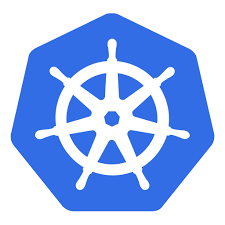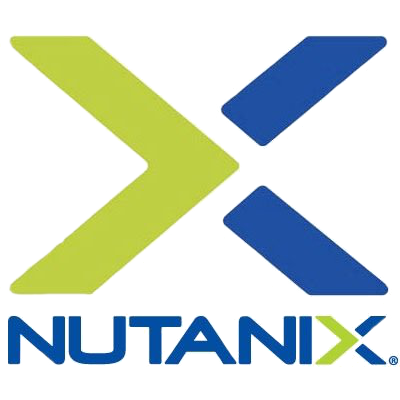Managing Kubernetes Object
Hai semuanya, sebelumnya kita udah membahas tentang Objects pada Kubernetes sekarang kita akan bagaimana cara memanage Objectnya. Seperti yang kita tahu untuk berinteraksi dengan Kubernetes Cluster yaitu dengan menggunakan Kubernetes Client yaitu kubectl, Kubernetes API, dan Kubernetes Client Libraries. Kali ini kita akan membahas tentang kubectl command line terlebih dulu ya Diantaranya
- Management techniques
- Imperative commands
- Imperative object configuration
- Declarative object configuration
Ok langsung aja kita bahas materi pertama
Management techniques
The kubectl command-line tool supports several different ways to create and manage Kubernetes objects. A Kubernetes object should be managed using only one technique. Mixing and matching techniques for the same object results in undefined behavior.
Most Kubectl commands typically fall into one of a few categories:
- Declarative Resource Management, used for Deployment and Operations (e.g. GitOps)
- Imperative Resource Management, used for Development Only. Run commands to manage Kubernetes Workloads using Command Line arguments and flags
- Printing Workload State, used for Debugging or Print information about Workloads.
- Interacting with Containers, used for Debugging or
exec,attach,cp, andlogs - Cluster Management, used for Cluster Ops or Drain and Cordon Nodes
Untuk lebih detailnya kita bisa lihat help atau documentasinya dengan menggunakan command-line
kubectl --helpMaka hasilnya seperti berikut:
➜ ~ kubectl -h
kubectl controls the Kubernetes cluster manager.
Find more information at: https://kubernetes.io/docs/reference/kubectl/overview/
Basic Commands (Beginner):
create Create a resource from a file or from stdin
expose Take a replication controller, service, deployment or pod and expose it as a new
Kubernetes service
run Run a particular image on the cluster
set Set specific features on objects
Basic Commands (Intermediate):
explain Get documentation for a resource
get Display one or many resources
edit Edit a resource on the server
delete Delete resources by file names, stdin, resources and names, or by resources and
label selector
Deploy Commands:
rollout Manage the rollout of a resource
scale Set a new size for a deployment, replica set, or replication controller
autoscale Auto-scale a deployment, replica set, stateful set, or replication controller
Cluster Management Commands:
certificate Modify certificate resources.
cluster-info Display cluster information
top Display resource (CPU/memory) usage
cordon Mark node as unschedulable
uncordon Mark node as schedulable
drain Drain node in preparation for maintenance
taint Update the taints on one or more nodes
Troubleshooting and Debugging Commands:
describe Show details of a specific resource or group of resources
logs Print the logs for a container in a pod
attach Attach to a running container
exec Execute a command in a container
port-forward Forward one or more local ports to a pod
proxy Run a proxy to the Kubernetes API server
cp Copy files and directories to and from containers
auth Inspect authorization
debug Create debugging sessions for troubleshooting workloads and nodes
Advanced Commands:
diff Diff the live version against a would-be applied version
apply Apply a configuration to a resource by file name or stdin
patch Update fields of a resource
replace Replace a resource by file name or stdin
wait Experimental: Wait for a specific condition on one or many resources
kustomize Build a kustomization target from a directory or URL.
Settings Commands:
label Update the labels on a resource
annotate Update the annotations on a resource
completion Output shell completion code for the specified shell (bash or zsh)
Other Commands:
api-resources Print the supported API resources on the server
api-versions Print the supported API versions on the server, in the form of "group/version"
config Modify kubeconfig files
plugin Provides utilities for interacting with plugins
version Print the client and server version information
Usage:
kubectl [flags] [options]
Use "kubectl <command> --help" for more information about a given command.
Use "kubectl options" for a list of global command-line options (applies to all commands).
Imperative commands
When using imperative commands, a user operates directly on live objects in a cluster. The user provides operations to the kubectl command as arguments or flags. This is the recommended way to get started or to run a one-off task in a cluster. Because this technique operates directly on live objects, it provides no history of previous configurations.
Run an instance of the nginx container by creating a Deployment object:
kubectl create deployment nginx --image nginxAdvantages compared to object configuration:
- Commands are expressed as a single action word.
- Commands require only a single step to make changes to the cluster.
Disadvantages compared to object configuration:
- Commands do not integrate with change review processes.
- Commands do not provide an audit trail associated with changes.
- Commands do not provide a source of records except for what is live.
- Commands do not provide a template for creating new objects.
Imperative object configuration
In imperative object configuration, the kubectl command specifies the operation (create, replace, etc.), optional flags and at least one file name. The file specified must contain a full definition of the object in YAML or JSON format.
Create the objects defined in a configuration file:
kubectl create -f nginx.yamlDelete the objects defined in two configuration files:
kubectl delete -f nginx.yaml -f redis.yamlUpdate the objects defined in a configuration file by overwriting the live configuration:
kubectl replace -f nginx.yamlAdvantages compared to imperative commands:
- Object configuration can be stored in a source control system such as Git.
- Object configuration can integrate with processes such as reviewing changes before push and audit trails.
- Object configuration provides a template for creating new objects.
Disadvantages compared to imperative commands:
- Object configuration requires basic understanding of the object schema.
- Object configuration requires the additional step of writing a YAML file.
Declarative object configuration
When using declarative object configuration, a user operates on object configuration files stored locally, however the user does not define the operations to be taken on the files. Create, update, and delete operations are automatically detected per-object by kubectl. This enables working on directories, where different operations might be needed for different objects.
For examples, Process all object configuration files in the configs directory, and create or patch the live objects. You can first diff to see what changes are going to be made, and then apply:
kubectl diff -f configs/
kubectl apply -f configs/Recursively process directories:
kubectl diff -R -f configs/
kubectl apply -R -f configs/Advantages compared to imperative object configuration:
- Changes made directly to live objects are retained, even if they are not merged back into the configuration files.
- Declarative object configuration has better support for operating on directories and automatically detecting operation types (
create,patch,delete) per-object.
Disadvantages compared to imperative object configuration:
- Declarative object configuration is harder to debug and understand results when they are unexpected.
- Partial updates using diffs create complex merge and patch operations.




